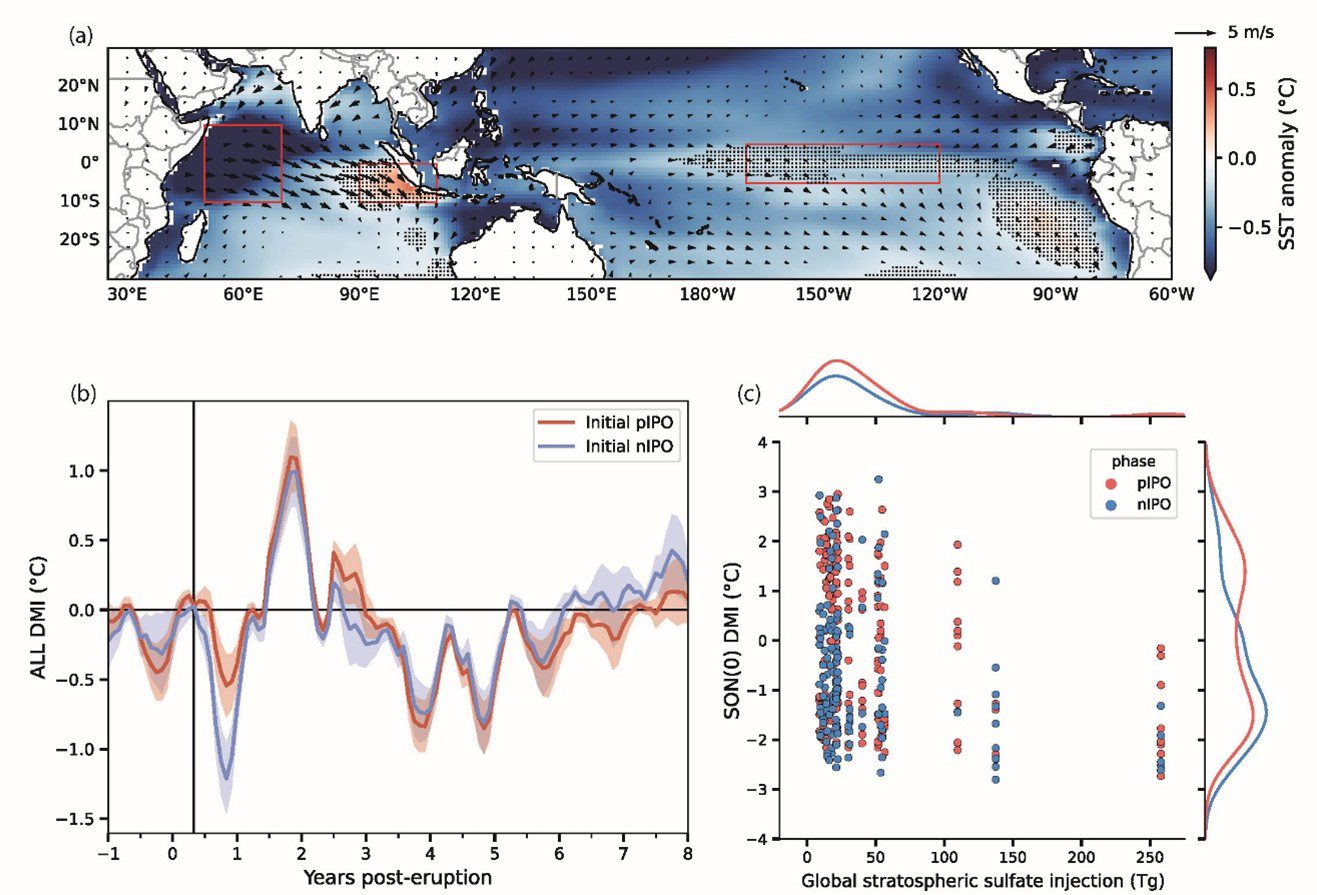Tiger, B. H., & Ummenhofer, C. C., 2023. Tropical Volcanic Eruptions and Low Frequency Indo-Pacific Variability Drive Extreme Indian Ocean Dipole Events. Geophysical Research Letters, 50(19), e2023GL103991. https://doi.org/10.1029/2023GL103991

Top: Initial sea surface temperature (SST) and surface wind response to strong tropical eruptions. Bottom left: Post-eruption timeseries composite of the Indian Ocean west-east SST gradient under positive Interdecadal Pacific Oscillation (IPO) (red) and negative IPO (blue) initial conditions. Bottom right: Scatterplot and probability density functions of initial Indian Ocean SST gradient response to eruptions color-coded by IPO phase at time eruption. (Image provided by Ben Tiger)
Volcanic eruptions can have significant climate impacts and serve as useful natural experiments for better understanding the effects of abrupt, externally forced climate change. Here, we investigate the Indian Ocean Dipole’s (IOD) response to the largest tropical volcanic eruptions of the last millennium using an ensemble of simulations. Post-eruption composites show a strong negative IOD developing in the eruption year (i.e., western Indian Ocean cooling and eastern Indian Ocean warming). The IOD and El Niño-Southern Oscillation (ENSO) show a long-term damped oscillatory response that can take up to 8 years to return to pre-eruptive baselines. Moreover, the Interdecadal Pacific Oscillation (IPO) phase at the time of eruption controls the initial IOD response to intense eruptions, with negative (positive) IPO phasing favoring more negative (positive) IOD values via modulation of the background state of the eastern Indian Ocean thermocline depth. These results have important implications for climate risk in low-likelihood, high-impact scenarios, particularly in vulnerable Indian Ocean rim communities unprepared for IOD and ENSO extremes.
